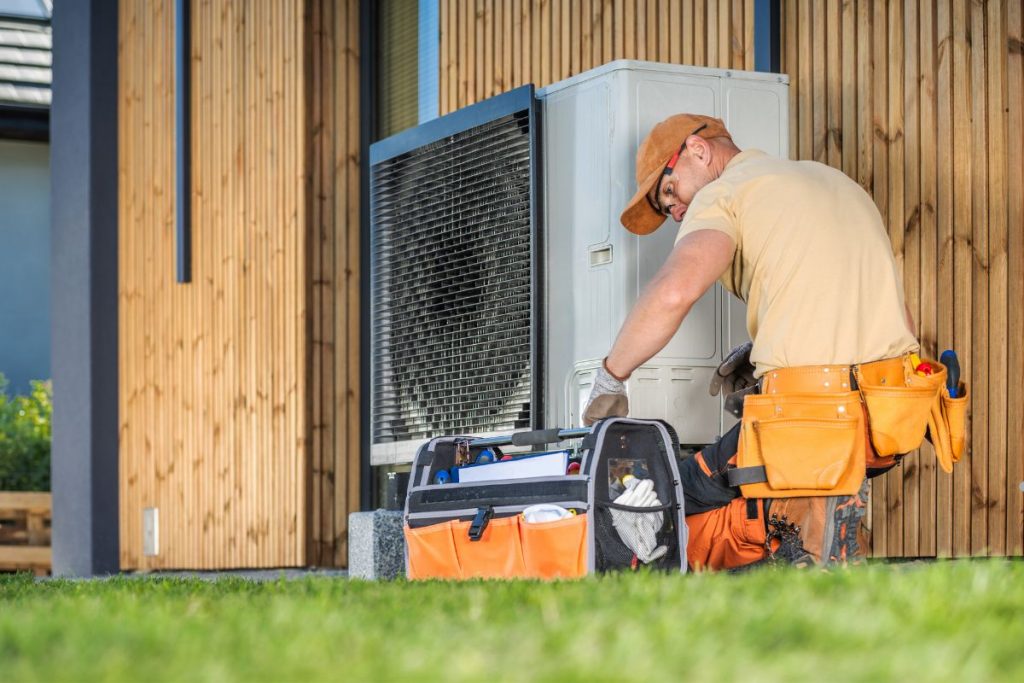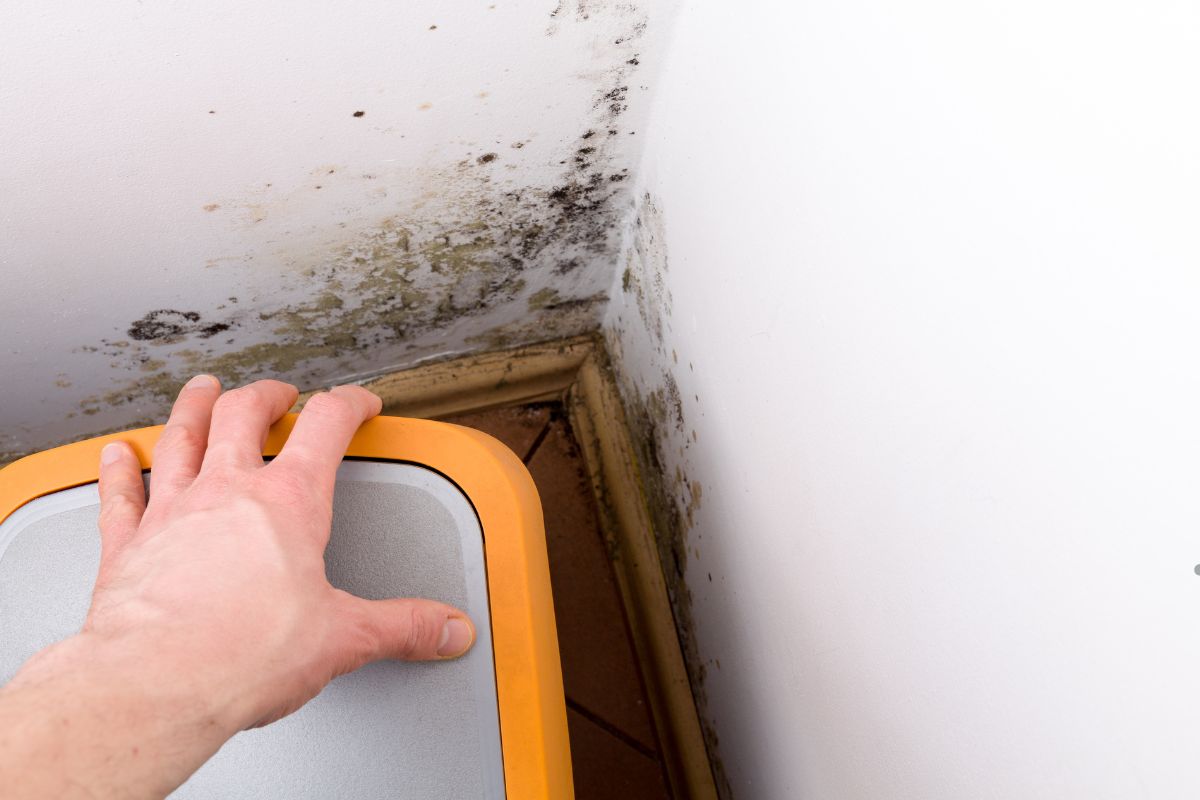
Is mold lurking in your HVAC system, silently impacting your health and your home’s efficiency? Yes, it’s a common problem in the USA! Mold growth inside your heating and cooling system can lead to respiratory issues, allergic reactions, increased energy bills, and even damage to your HVAC unit. This article will uncover the hidden dangers of mold in your HVAC, provide actionable tips to prevent its growth, and guide you on when to call in the professionals.
Introduction: The Silent Threat in Your Air Ducts
Imagine breathing air that’s constantly contaminated with mold spores. It’s not a pleasant thought, but unfortunately, it’s a reality for many homeowners in the United States. Mold thrives in the dark, damp environments within HVAC systems, often going unnoticed until it causes significant problems. Studies show that a significant percentage of US homes have elevated mold spore counts, and HVAC systems are often a major contributing factor. This silent threat can impact your health, home’s air quality, and even your wallet through increased energy bills.
What is Mold and Why Does It Grow in HVAC Systems?
Mold is a type of fungus that thrives in moist environments. It reproduces through tiny spores that float in the air. While mold is naturally present everywhere, it becomes a problem when it finds ideal conditions to grow indoors, such as in your HVAC system.
- What is Mold? Mold isn’t just one thing, it’s a vast kingdom of fungi. It’s necessary for breaking down organic matter in the environment, but its presence in your home is a different story.
- Common Types of Mold Found in HVAC Systems: Several mold types are commonly found in HVAC systems:
- Aspergillus: A common allergen.
- Cladosporium: Often found on plants and decaying materials.
- Stachybotrys Chartarum (Black Mold): Infamous for its potential health effects (though any mold can be harmful to sensitive individuals).
- Ideal Conditions for Mold Growth in HVAC: Mold requires:
- Moisture: Condensation from cooling coils, leaks, or high humidity.
- Darkness: HVAC systems are often dark, enclosed spaces.
- Organic Matter: Dust, pollen, and other debris that accumulate in the system provide food for mold.
Yes, mold can be removed from your HVAC system, but it’s usually best handled by professionals. Mold in your heating, ventilation, and air conditioning system can harm your health and damage your equipment. This guide covers how to identify, remove, and prevent mold growth, helping you maintain a safe and comfortable home. For a detailed step-by-step approach, check out our comprehensive guide here.
Where Does Mold Typically Grow in an HVAC System?
Mold can grow in various locations within your HVAC system, any spot with moisture, darkness, and organic matter is a potential breeding ground:
- Air Ducts: Dust and debris accumulate in air ducts, providing a food source for mold.
- Evaporator Coils: These coils are designed to cool air, which creates condensation, a perfect environment for mold.
- Drain Pans: If the drain pan is clogged, water can accumulate and promote mold growth.
- Air Filters: While filters trap dust, they can also become a breeding ground for mold if they are not changed regularly.
- Blower Fan: The blower fan can become contaminated with mold spores and distribute them throughout your home.

The Health Impacts of Mold Exposure from HVAC Systems
Exposure to mold spores circulating through your HVAC system can trigger a range of health problems:
- Allergic Reactions & Respiratory Issues: Mold can cause sneezing, runny nose, itchy eyes, coughing, and wheezing.
- Asthma Exacerbation: Mold can trigger asthma attacks in individuals with asthma.
- Infections: In rare cases, certain molds can cause serious infections, especially in people with weakened immune systems.
- Sick Building Syndrome: Prolonged exposure to mold can contribute to “sick building syndrome,” characterized by a variety of symptoms like headaches, fatigue, and difficulty concentrating.
Don’t let mold threaten your health and home! Our expert mold removal services ensure a safe, clean environment. Call us now at for a free inspection and professional mold remediation you can trust!
The Impact of Mold on Your HVAC System’s Efficiency and Lifespan
Beyond health concerns, mold can also wreak havoc on your HVAC system:
- Reduced Airflow: Mold growth restricts airflow through the ducts, making your system work harder.
- Increased Energy Consumption: A struggling HVAC system uses more energy, leading to higher utility bills.
- HVAC System Damage: Mold can corrode components of your HVAC system, leading to costly repairs or even premature failure.
- Odor: A musty odor is often a sign of mold growth within the system.
Signs You Might Have Mold in Your HVAC System
Be vigilant and watch out for these telltale signs:
- Musty Odor: A persistent musty smell, especially when the HVAC system is running.
- Visible Mold Growth: Obvious mold growth on air vents, ductwork, or around the HVAC unit.
- Increased Allergy Symptoms: Worsening allergy symptoms when indoors, especially when the HVAC is on.
- Unexplained Health Issues: Persistent cough, sore throat, or other respiratory problems.
- Higher Energy Bills: A sudden and unexplained increase in your energy consumption.
We take pride in offering top-quality mold removal and remediation solutions tailored to your needs. Explore our services to learn more about how we can help keep your home or business safe and mold-free.
Preventing Mold Growth in Your HVAC System
Prevention is key to avoiding mold problems:
- Regular HVAC Maintenance: Schedule annual inspections and tune-ups to ensure your system is clean and functioning properly.
- Controlling Humidity: Maintain a humidity level between 30-50% in your home. Use dehumidifiers in damp areas.
- Using High-Efficiency Air Filters: Use high-quality air filters to trap dust and pollen. Change filters regularly (every 1-3 months).
- Prompt Leak Repair: Fix any leaks in your plumbing or HVAC system immediately.
- Professional Duct Cleaning: Consider professional duct cleaning every few years to remove accumulated dust and debris.
Mold in your HVAC system can harm your health and damage your home. Don’t wait until it’s too late! Call us now at for a professional inspection and expert mold removal services to keep your air clean and safe.

How to Remove Mold from Your HVAC System (and When to Call a Professional)
- DIY Mold Removal (Surface Mold Only): For small areas of surface mold, you can try cleaning with a mixture of bleach and water (always wear protective gear).
- When to Hire a Professional Mold Remediation Service: Never attempt to clean large areas of mold yourself. If mold growth is extensive, or if you suspect mold is present inside the ductwork, contact a professional mold remediation company. Improper cleaning can spread mold spores and worsen the problem.
Choosing a Reputable Mold Remediation Company
Selecting the right company is crucial:
- Licensing and Certification: Ensure the company is licensed and certified in your state.
- Experience and Expertise: Choose a company with a proven track record of successful mold remediation projects.
- Proper Equipment and Techniques: Make sure they use appropriate equipment and follow industry best practices.
- Insurance and Guarantees: Verify that they have adequate insurance and offer guarantees on their work.
Protecting Your Health and Home from Mold in HVAC Systems
Mold in your HVAC system is a serious issue that can impact your health, your home’s air quality, and the efficiency of your heating and cooling system. By understanding the causes of mold growth, recognizing the signs, and taking preventative measures, you can protect your family and your investment. If you suspect you have a mold problem, don’t hesitate to contact a qualified professional for inspection and remediation. Take control of your indoor air quality today!
Hidden mold in your HVAC system can harm your health and home. Don’t let it go unnoticed! Our experts provide safe, effective mold removal. Contact us today for an inspection and breathe cleaner air!
